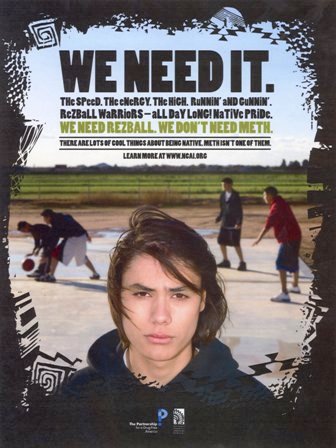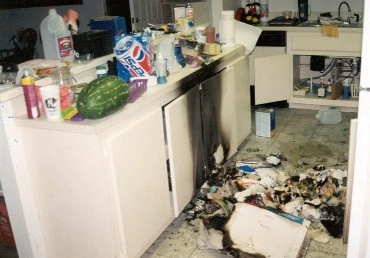Methamphetamine abuse is a serious and relatively new threat in Indian Country. The fight against methamphetamines will be staged on many fronts. Education, prevention, and treatment are all necessary components for success against meth.
According to Methamphetamine in Indian Country Tool Kit
Methamphetamine is an American problem, infiltrating and devastating our communities throughout the Untied States. Unfortunately, however, this drug has disproportionately devastated Native American Tribal Communities (there are over 560 independent sovereign Tribal governments and communities in the United States). Mexican drug cartels have been purposefully targeting rural Native American Reservations, both for the sale of meth and as distribution hubs (over 70% of Meth is now estimated to be smuggled from Mexico). Native Americans now experience the highest meth usage rates of any ethnic group in the nation.

Methamphetamine: Also known as meth, crank, speed, ice or crystal is a central nervous system stimulant. People ingest meth by taking it in pill form, smoking or snorting it, or injecting it.
The precursor materials used to make meth include pseudoephedrine, acetone, lithium batteries and anhydrous ammonia. These products are widely available in drug and grocery stores, hardware and feed stories and on the internet.
This is a man-made, highly volatile and addictive synthetic drug that can be produced in homes, cars, hotel rooms and has no respect for age, race, ethnicity, class or geography. A Meth lab can be as close as the last hotel you stayed in, your neighbor's back yard, their bathtub, or in the car trunk of the car you last passed on the highway.
What is Methamphetamine?
- Methamphetamine, a derivative of amphetamine, is a highly addictive stimulant drug which affects the central nervous system by releasing high levels of the neurotransmitter dopamine.
- Methamphetamine is made in illegal laboratories and has a high potential for abuse and addiction.
- Street methamphetamine is referred to by many names such as 'speed', 'meth', 'ice', and 'crystal' depending on the geographic location and the method of use.
- Methamphetamine can be injected, taken orally, snorted, and smoked. The 'high' from methamphetamine use depends on how it is used lasting anywhere between several minutes to twelve hours.
- Typically meth is a white, odorless powder. Another form of methamphetamine, in clear chunky crystals, is called crystal meth, or ice. Methamphetamine can also be in the form of small, brightly colored tablets, often called by their Thai name, yaba.
Two Types of Meth Labs
There are two main types of clandestine methamphetamine labs. One is the “super” lab — a large, highly organized lab, the other type is small-scale labs, often called “mom and pop” setups.
How Much of a Problem are Illegal Meth Labs
For every pound of meth cooked, there are six or more pounds of hazardous materials or chemicals produced. Surfaces in the meth lab and surroundings may become contaminated with this hazardous waste.
These hazardous materials are usually left on the premises or dumped down local septic systems. Often they are buried in backyards, open spaces, in ditches along roadways or poured down drains into the municipal sewer systems.
Clandestine methamphetamine labs cause three main types of harm:
- physical injury from explosions, fires, chemical burns, and toxic fumes
- Environmental hazards that can remain after the lab has been abandoned.
- Child endangerment.

Environmental Damage Resulting in Toxic Waste
To address in part this growing environmental problem and the need for public health protection, Office of Environmental Health Hazard Assessment (OEHHA) of the United States has developed two types of chemical-specific information documents.
- The first set, technical support documents (TSDs), are referenced, multi-page publications, which contain important health and safety data,
- The second set, two-page fact sheets contain much of the same information as the corresponding TSDs; however, the details are presented in a more succinct, graphical format.
Other public health hazards that result from crystal meth production are the fact that toxic waste dumped into trashcans and commercial dumpsters could put sanitation workers at risk and water used to put out lab fires can also wash toxic chemicals into sewers.
Clean up of an Illegal Meth Lab
It is really important that members of the public do not attempt to clean up abandoned drug labs; in fact, the best thing to do is to contact the police to send in their forensic team to assess and evaluate. They will probably appoint a federal or state licensed decontamination contractor. These contractors have hazardous materials training and know how to decontaminate meth lab properties in a safe and sustainable way.
Sources:
- US Department of Justice Drug Enforcement Administration, Guidelines for Law Enforcement for the Clean up of Clandestine Drug Laboratories. 2005
- Methamphetamine Clean Up Fact Sheet. Office of Environmental Health Hazard Assessment (OEHHA) California Government
